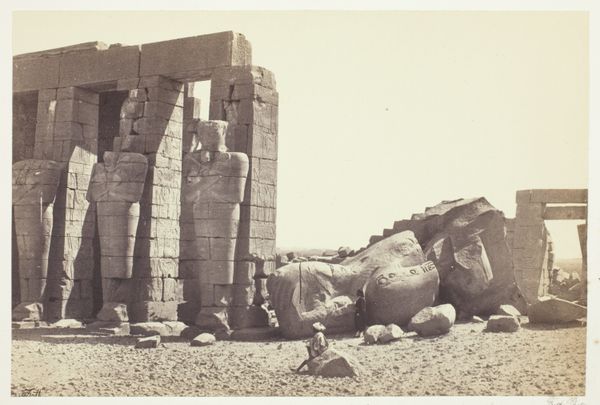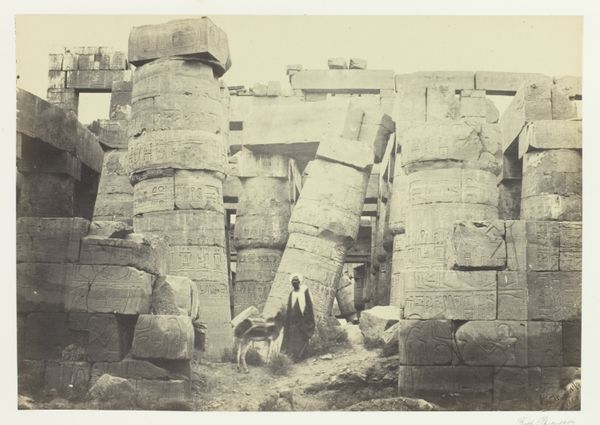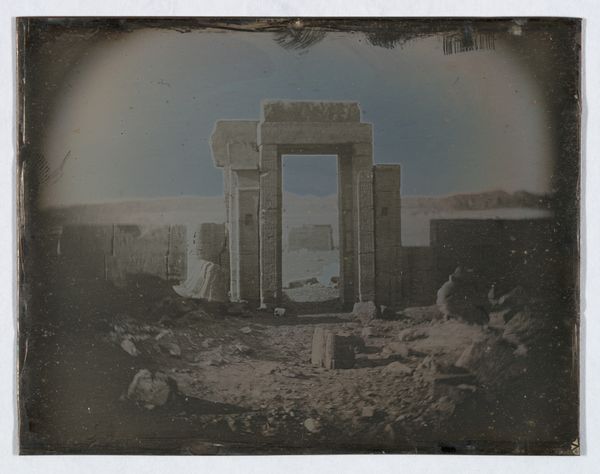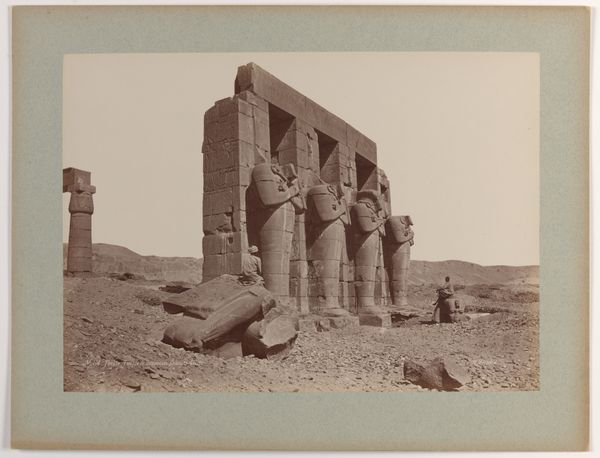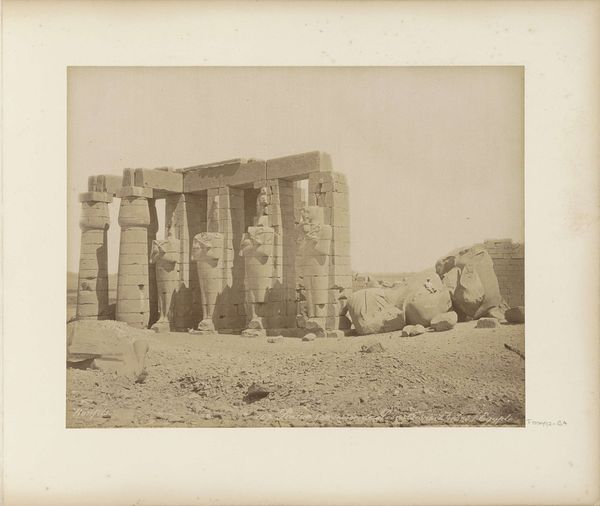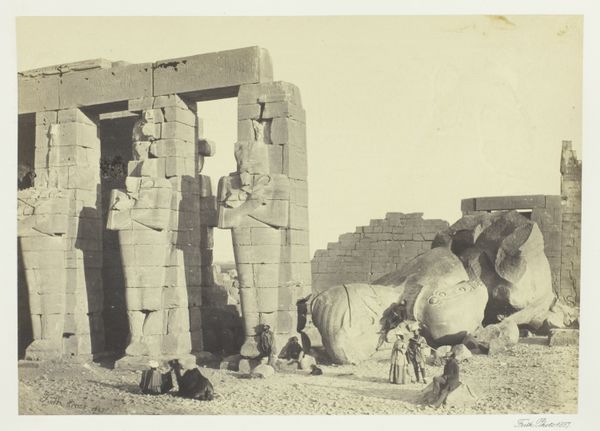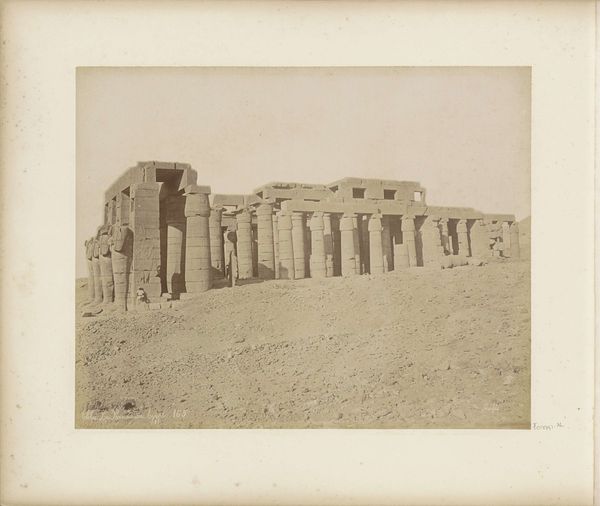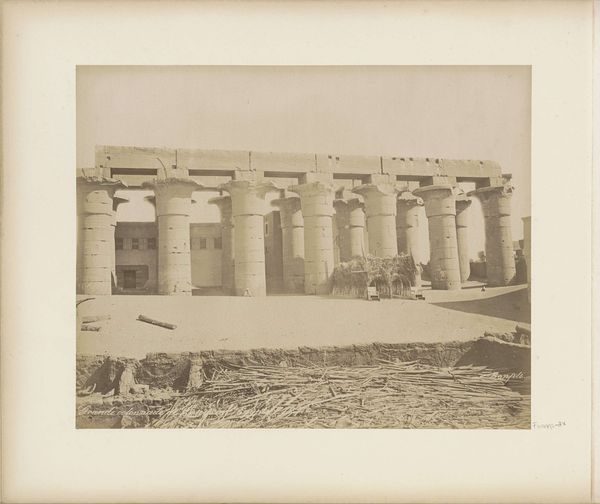
Ramesseum, Thebes (201. Thèbes. 1844. 202 Rhamséion.) 1844
0:00
0:00
daguerreotype, photography, architecture
#
muted colour palette
#
landscape
#
daguerreotype
#
ancient-egyptian-art
#
photography
#
ancient-mediterranean
#
arch
#
architecture
Dimensions: Image: 7 3/8 × 9 7/16 in. (18.8 × 24 cm)
Copyright: Public Domain
Curator: Here we have "Ramesseum, Thebes," a daguerreotype captured by Joseph-Philibert Girault de Prangey in 1844. It resides right here in the Met. Editor: My initial reaction is melancholy. The faded blues and browns create a ghostly, ethereal atmosphere around those colossal ruins. They look…vulnerable. Curator: Vulnerable? That’s an interesting take. This daguerreotype, one of the earliest photographic processes, allows us to see ancient Thebes with an almost archaeological clarity. Think about the weight of history held in those stones. Editor: Precisely. It's the ruins *and* the nascent technology that speak to me. These massive figures and columns, representations of pharaonic power, now reduced to this delicate, faded image. It's like history is whispering secrets only the photograph can catch. Curator: The Ramesseum itself was, of course, the memorial temple of Pharaoh Ramesses II. Those imposing statues – they were meant to project authority, divinity, and timelessness. Editor: But time *always* wins, doesn't it? Notice how the sunlight drapes over the figures. The artist has not only frozen architecture in time, but also a particular moment, giving the heavy stone columns a kind of lightness. A transient impression of what's forever. It is all very carefully observed to me. Curator: Absolutely. I also read the columns in a way that emphasizes steadfast endurance. I keep asking myself about who came and who left, who were the witnesses of the site both then and in the almost two centuries since. Editor: So, in its delicate, faded beauty, we’re left contemplating the rise and fall of empires, the fleeting nature of time, all framed by the cool gaze of early photography. That seems a pretty potent alchemy of image and place. Curator: I agree. The alchemy resides, too, in this image opening more pathways into the rich story of what those architectural elements speak of, across the immense timescale they embody.
Comments
No comments
Be the first to comment and join the conversation on the ultimate creative platform.
